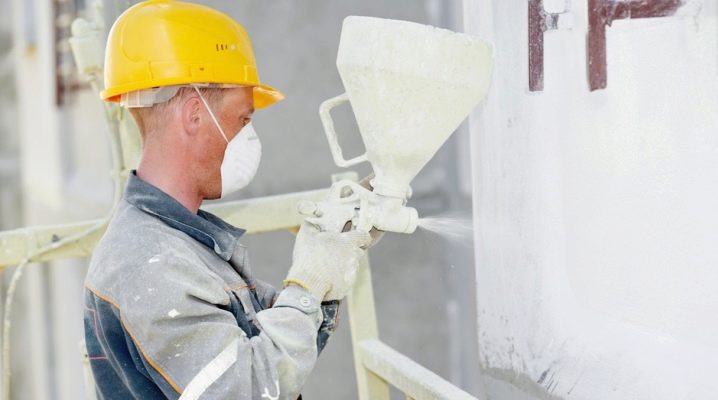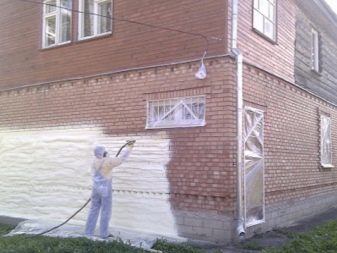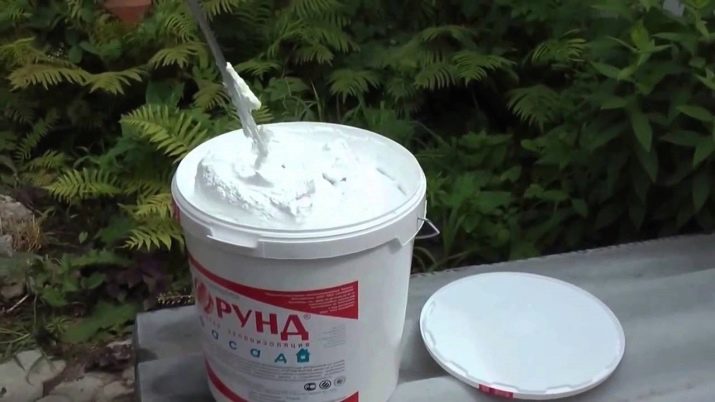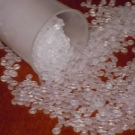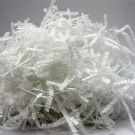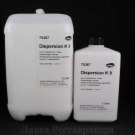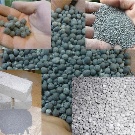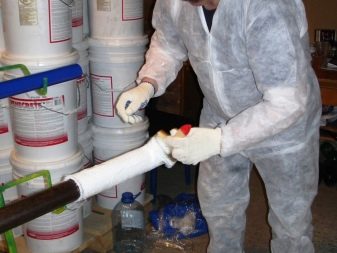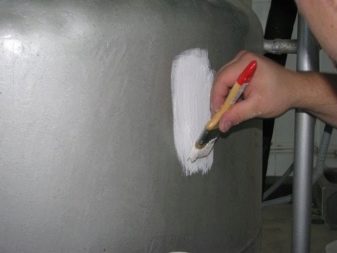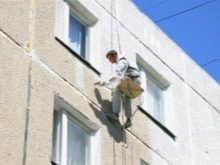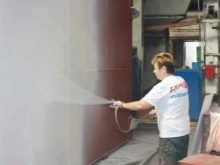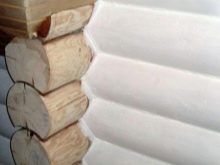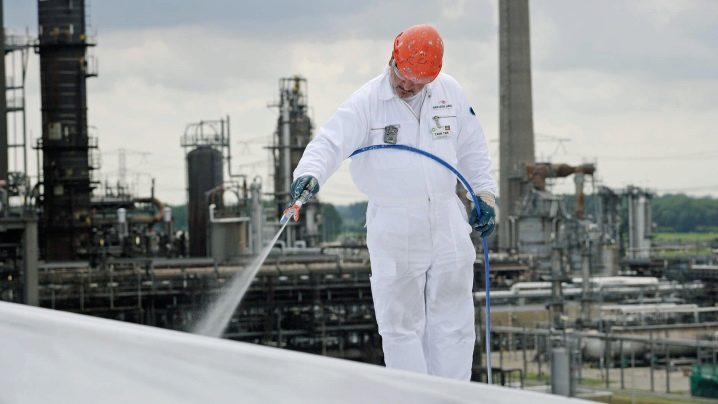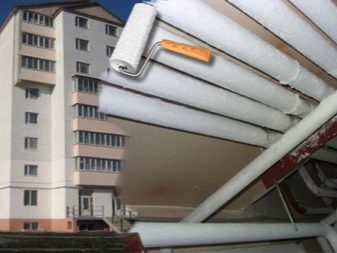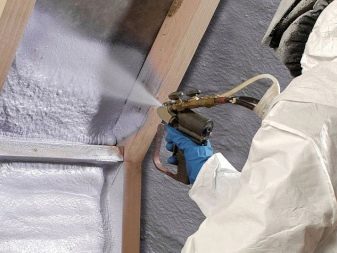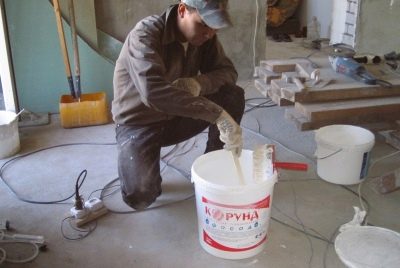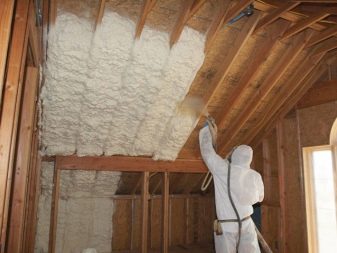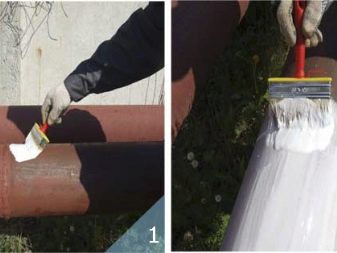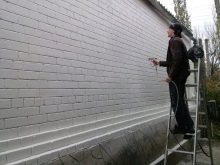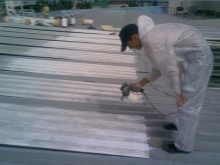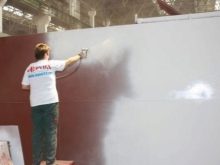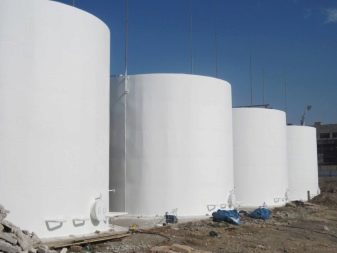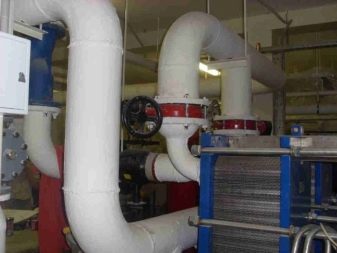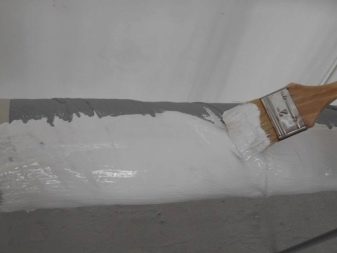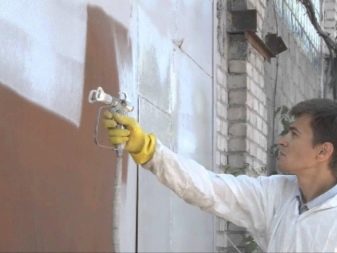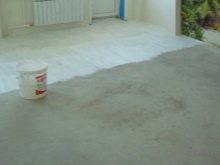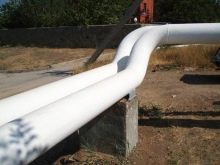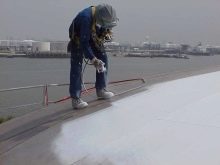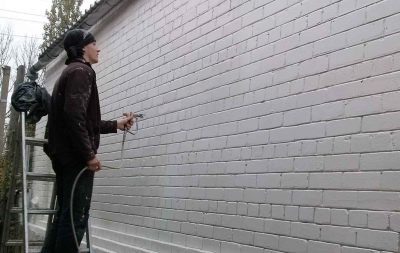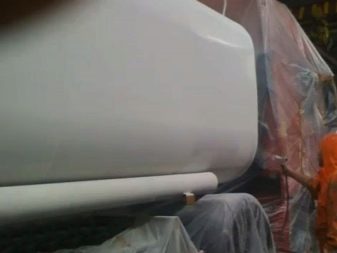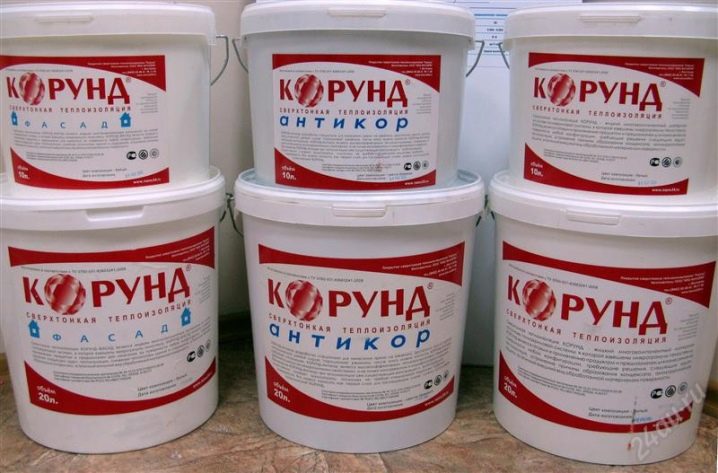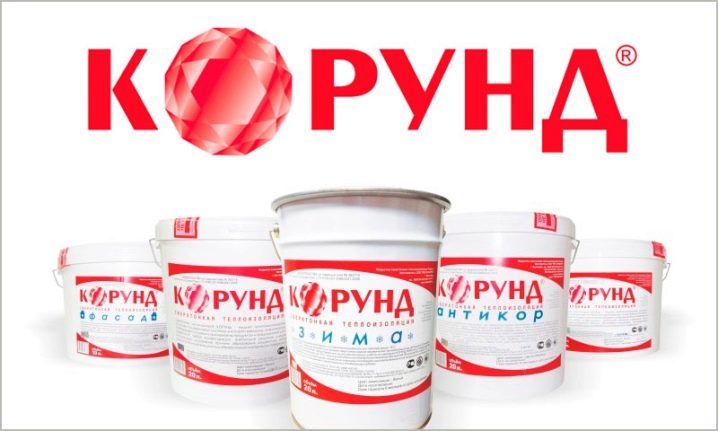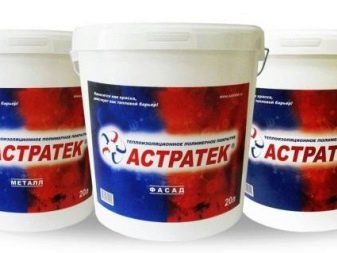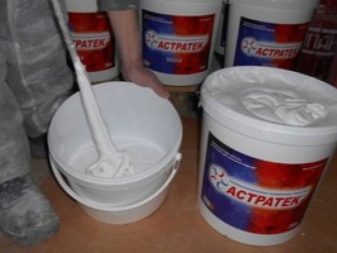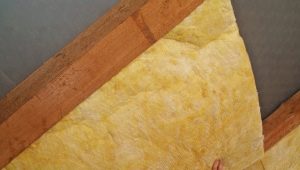Heat-insulating paints: features of choice
Heat-insulating paint is a relatively new product, for which it is often called nanocoloring. Nevertheless, its undeniable merits have already been appreciated by a large number of consumers. The main advantage of warming a house with such a material is the preservation of heat in the room, which minimizes the cost of electricity or fuel.
Composition
Insulating paint includes the following elements:
- water;
- acrylic dispersion;
- various additives (foamed glass, silicone balls, fiberglass and others).
It is on the volume of additives in the composition of paint and its thermal properties depend. When applied, this paintwork product forms a dense layer with a thickness of about 2-4 millimeters - it is able to replace a larger amount of traditional insulation. The paint is applied in an even layer and is well distributed over the entire surface to be treated. It is possible to use it on hard-to-reach objects with a different coating.
Externally, heat-insulating paints look like a paste of gray or white. For ease of application, it is advisable to use a sprayer, in which case the surface treatment will occur most evenly, and the coating will look smooth and even.
The operating time of paint and varnish heat mixture, declared by manufacturers - 12-40 years. It depends on the external conditions affecting the material. The heat-paint is moisture resistant, does not lose its properties and can be used when the temperature range from -50 to +250 degrees Celsius.
Scope of application
Teplokraska have a fairly wide scope. They can be used both for thermal insulation of facades, and applied during interior decoration and insulation of basements. Application to pipes, plumbing, gas pipelines and heating boilers significantly reduces heat loss.
Paints can handle various containers, metal structures, they are used for warming cars. Effective in agricultural and industrial production.
Due to the wide scope of use, insulating paints may well become an alternative to standard insulation.
Distinctive features
Thermal insulation functions directly depend on the volume of fillers in the paint. One of the advantages of this paint mixture is the possibility of applying to any surface. Most manufacturers recommend applying paint in 3 layers.
It is very important to completely dry each previous layer before applying a new one. How strong the insulating effect will be depends on the thickness of the applied layer of material.
Advantages and disadvantages
What should be preferred - heating or standard insulation - can be solved by considering the main advantages and disadvantages of the paint mixture based on consumer feedback.
Insulating paint has the following advantages:
- easy to use; no special skills are required to work with it;
- uniformly applied, hides coating defects;
- the cost of heating and electricity due to its properties can be significantly reduced;
- hypoallergenic, non-toxic, does not contain harmful impurities;
- bravely responds to exposure to ultraviolet radiation;
- quietly interacts with aggressive environment, able to withstand various temperatures and mechanical effects;
- differs in fire resistance;
- the service life of such a material is rather long, at the same time the heat-saving properties are preserved during the whole period of operation;
- applying a heat-insulating mixture helps prevent mold and fungus, as well as avoid corrosion on metal surfaces;
- protects facades from destruction;
- no condensation at low temperatures.
However, there are disadvantages that make some consumers refuse to use this type of coverage. First of all, this is a fairly high price for materials. Besides, achieving the best effect involves the expenditure of a large volume of paint.
It would also be inappropriate to warm the premises with this type of material as the main one.
Functional features
The main and main feature of paint is heat saving. This saves on heating and electricity.
It should be noted the protective function of the paint. The room is protected from cold and heat loss. Corrosion of the processed objects from metal is excluded, their surface is protected from the appearance of fungus and mold.Strengthening function is expressed in the extension of the life of the treated surface.
The environmental friendliness of greenhouse paint allows its use in various types of work. The mixture is non-toxic and does not cause any harm to health..
Types of teplokrasok
Heat-insulating paints can be classified by composition. The mixture of water-based is used mostly for thermal insulation of pipes. Acrylic-based paint can be applied to any surface that is considered universal.
Paint materials and objects of use are divided. Universal views are used in work with internal and external walls, ceiling and floor. Facade are used exclusively for street work, resistant to heat and moisture. Insulating paints are taken to cover metal elements, ventilation, gas pipelines and water pipes.
Criterias of choice
Choosing heat-insulating paint, you need to take into account its characteristics and types of proposed work. Much depends on the application and its location, as well as the type of surface. It will be useful to study the most frequently offered in the market manufacturers and familiarity with the opinions of buyers about their products.
For example, for work carried out outdoors, you need to pay special attention to the indicators of resistance to water and the ability of the mixture not to lose its properties in cold and hot weather. For interior decorating work, paint is needed that does not emit harmful substances. For painting pipes, heat materials with maximum heat resistance are used.
It is also necessary to calculate the most accurate amount of the mixture, which is required for work. First of all, it depends on the area to which it is planned to apply thermal paint. An important role is played by the surface of the object. Excess consumption when working with wood, concrete and brick can be up to 10 percent, with metal products - up to 6 percent.
If there are defects on the coating, it can significantly increase the consumption of paint heat mixture. When cracks, protrusions and other features will be spent much more material. Overruns can grow up to 30-40 percent.
It is necessary to consider what thickness of paint will be applied, as well as the number of its layers. For different materials, manufacturers recommend using a different layer thickness, for example,1.5 millimeters of the mixture is enough for concrete, 2 millimeters for wood, but brick, metal, expanded clay concrete should be covered with a layer of 2.5 millimeters.
Application technology
Insulating paints are considered to be a fairly new product on the market, so they are not widely used at present. In addition, they have a higher cost compared to conventional paintwork materials. The use of heat mixtures can be identified with painting work. If possible, contact professional craftsmen.
The technology of applying warm paint is similar to conventional. We must not forget that each layer must be completely dried before applying a new. The effect of heat insulation directly depends on the number of layers. This is due to the special structure of the mixtures.
After complete drying, a thermal film appears on the surface. Its thermal conductivity is lower than that of conventional insulators. It is very thin, due to this, and need several layers of coating. Their number is individual, in some cases it is permissible to apply up to 10 layers of thermal paint.
Thermal insulation mixture can be applied to objects of various shapes and sizes. It is most convenient to use a sprayer, but there is nothing to worry about if you carry out work with an ordinary paint brush. The main thing is that in the end the paint should be evenly distributed.
When working indoors, it is recommended to use a respirator in order not to inhale ceramic microparticles. In addition, staining can take a long time.
Major manufacturers of teplokrasok
"Corundum"
Paints for thermal insulation are now becoming increasingly common due to their positive characteristics, therefore they are available in almost all specialized stores. Some manufacturers have proven themselves and their products are used quite often. Consider the most famous of them.
Thermal insulation paint "Korund" represents a wide range of heat mixtures for various areas. Products are used for cooling boilers, steam lines and heating systems. To reduce heat loss, the mixture is used for outdoor work. Inside the room can perform two functions - both insulating and decorative.Often used in interior decoration of public spaces. Suitable for work carried out in bathrooms, as due to its properties, copes with fungus and mold, in addition, has a water resistance.
Presented in 4 types.
- "Corundum Classic." Used for both external and internal work. Maintains temperature from-60 to +250 degrees Celsius.
- "Korund Antikor". It is applied during the work with products from metal. Protects against corrosion.
- "Corundum Winter". Gives the opportunity to apply paint in the winter season at temperatures up to -10 degrees. Used primarily for outdoor use.
- "Corundum Facade". It is used for thermal insulation of facades. Well protects the surface from moisture. When applying you need to remember that the thickness of each layer should not be less than 1 millimeter.
"Astratek"
Thermal insulating paint "Astratek" is considered environmentally friendly, because it does not contain organic solvents. Its protective layer is up to 3 millimeters thick. The term of operation is 15-30 years. Suitable for thermal insulation of various surfaces, including the most difficult to access, with temperatures up to 150 degrees.
It is presented in 3 types.
- "Astratek Universal". It is applied during the works both inside, and outside of the room. Made in white and gray. If necessary, the mixture can be diluted with water. Maintains temperature from-60 to +260 degrees.
- "Astratek Metal". Heat color gray with anti-corrosion effect. It is used during the work with metal, is suitable for external and internal works.
- "Astratek Facade". It is used when working with facades of buildings. It has a water-repellent effect. White colour. Convenient in application due to its viscosity.
"Armor"
Heat-insulating paint "Armor" is actually a liquid ceramic coating. It is applied both at internal, and at front works. Great for thermal insulation of pipes and large tanks with liquid. Used for painting equipment.
Presented in 4 types.
- "Armor Classic". Provides thermal insulation of pipelines and heating systems. Perfectly protects from external negative influences.
- "Armor Antikor". It is applied during the work with metal products. Protects against rust.
- "Armor Winter". It can be applied in a cold season at a temperature up to -35 degrees.It is frost-resistant at further operation.
- "Armor Facade". Provides thermal insulation of facades. It is applied in layers with a thickness of at least 1 millimeter. Protects against mold and mildew.
An experiment in heat retention with paint, see below.
